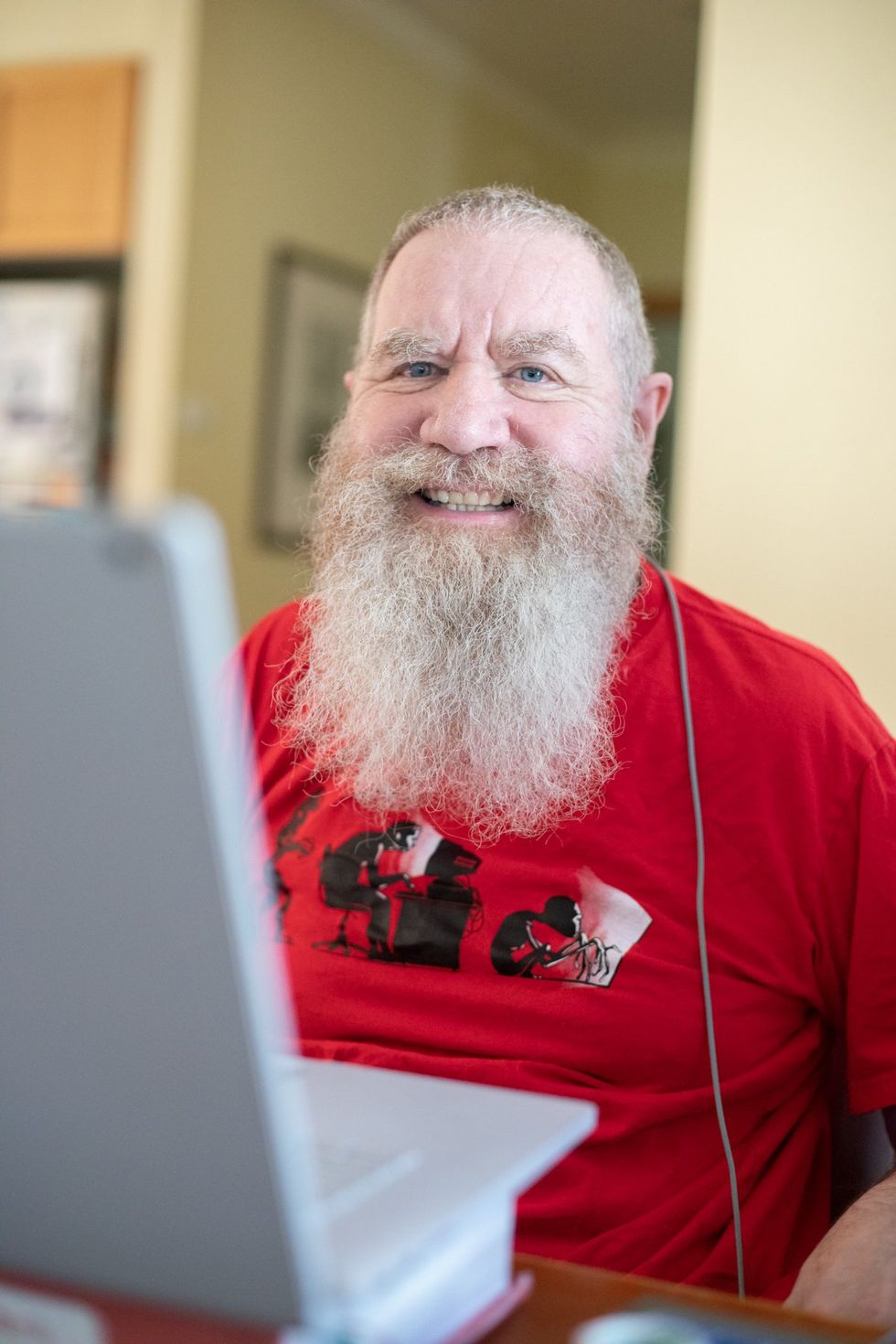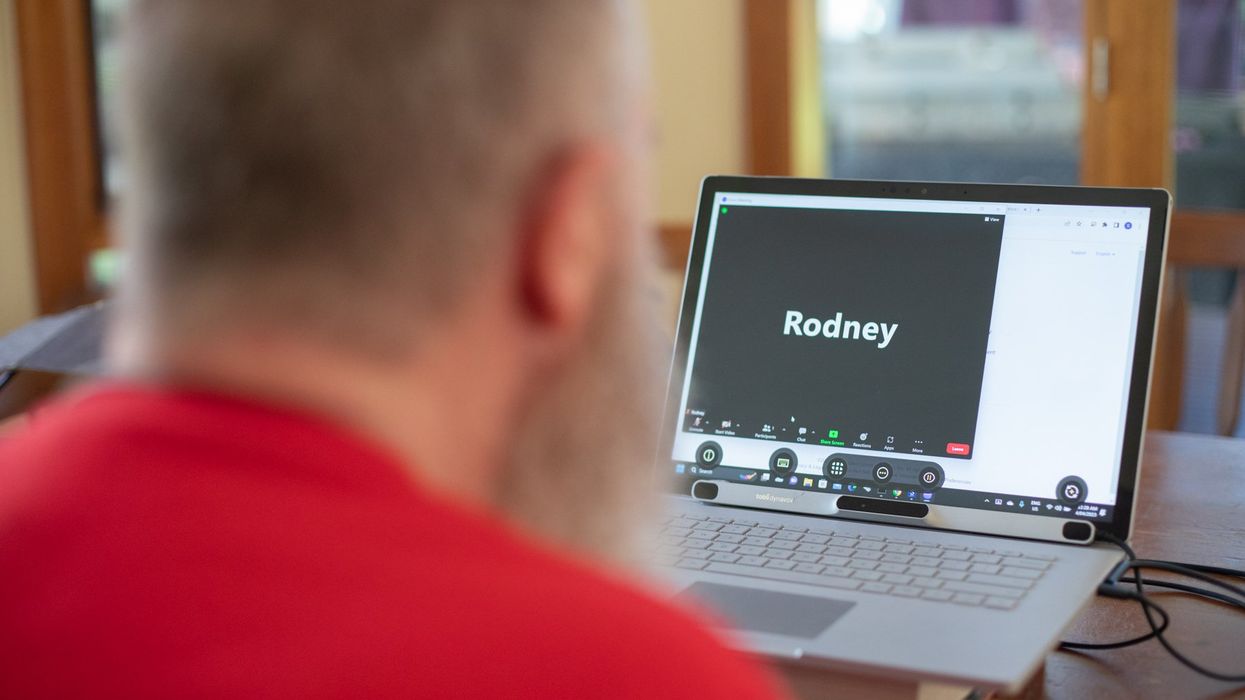Is Red Tape Depriving Patients of Life-Altering Therapies?

Medical treatment represented on a world map.
Rich Mancuso suffered from herpes for most of his adult life. The 49-year-old New Jersey resident was miserable. He had at least two to three outbreaks every month with painful and unsightly sores on his face and in his eyes, yet the drugs he took to control the disease had terrible side effects--agonizing headaches and severe stomach disturbances.
Last week, the FDA launched a criminal investigation to determine whether the biotech behind the vaccine had violated regulations.
So in 2016, he took an unusual step: he was flown to St. Kitt's, an island in the West Indies, where he participated in a clinical trial of a herpes vaccine, and received three injections of the experimental therapeutic during separate visits to the island. Within a year, his outbreaks stopped. "Nothing else worked," says Mancuso, who feels like he's gotten his life back. "And I've tried everything on the planet."
Mancuso was one of twenty genital herpes sufferers who were given the experimental vaccine in tests conducted on the Caribbean island and in hotel rooms near the campus of Southern Illinois University in Springfield where the vaccine's developer, microbiologist William Halford, was on the faculty. But these tests were conducted under the radar, without the approval or safety oversight of the Food and Drug Administration or an institutional review board (IRB), which routinely monitor human clinical trials of experimental drugs to make sure participants are protected.
Last week, the FDA launched a criminal investigation to determine whether anyone from SIU or Rational Vaccines, the biotech behind the vaccine, had violated regulations by aiding Halford's research. The SIU scientist was a microbiologist, not a medical doctor, which means that volunteers were not only injected with an unsanctioned experimental treatment but there wasn't even routine medical oversight.
On one side are scientists and government regulators with legitimate safety concerns....On the other are desperate patients and a dying scientist willing to go rogue in a foreign country.
Halford, who was stricken with a rare form of a nasal cancer, reportedly bypassed regulatory rules because the clock was ticking and he wanted to speed this potentially life-altering therapeutic to patients. "There was no way he had enough time to raise $100 million to test the drugs in the U.S.," says Mancuso, who became friends with Halford before he died in June of 2017 at age 48. "He knew if he didn't do something, his work would just die and no one would benefit. This was the only way."
But was it the only way? Once the truth about the trial came to light, public health officials in St. Kitt's disavowed the trial, saying they had not been notified that it was happening, and Southern Illinois University's medical school launched an investigation that ultimately led to the resignation of three employees, including a faculty member, a graduate student and Halford's widow. Investors in Rational Vaccines, including maverick Silicon Valley billionaire Peter Thiel, demanded that all FDA rules must be followed in future tests.
"Trials have to yield data that can be submitted to the FDA, which means certain requirements have to be met," says Jeffrey Kahn, a bioethicist at Johns Hopkins University in Baltimore. "These were renegade researchers who exposed people to unnecessary risks, which was hugely irresponsible. I don't know what they expected to do with the research. It was a waste of money and generated data that can't be used because no regulator would accept it."
But this story illuminates both sides of a thorny issue. On one side are scientists and government regulators with legitimate safety concerns who want to protect volunteers from very real risks—people have died even in closely monitored clinical trials. On the other, are desperate patients and a dying scientist willing to go rogue in a foreign country where there is far less regulatory scrutiny. "It's a balancing act," says Jennifer Miller, a medical ethicist at New York University and president of Bioethics International. "You really need to protect participants but you also want access to safe therapies."
"Safety is important, but being too cautious kills people, too—allowing them to just die without intervention seems to be the biggest harm."
This requirement—that tests show a drug is safe and effective before it can win regulatory approval--dates back to 1962, when the sedative thalidomide was shown to have caused thousands of birth defects in Europe. But clinical trials can be costly and often proceed at a glacial pace. Typically, companies shell out more than $2.5 billion over the course of the decade it normally takes to shepherd a new treatment through the three phases of testing before it wins FDA approval, according to a 2014 study by the Tufts Center for the Study of Drug Development. Yet only 11.8 percent of experimental therapies entering clinical tests eventually cross the finish line.
The upshot is that millions can suffer and thousands of people may die awaiting approvals for life saving drugs, according to Elizabeth Parrish, the founder and CEO of BioViva, a Seattle-based biotech that aims to provide data collection platforms to scientists doing overseas tests. "Going offshore to places where it's legal to take a therapeutic can created expedited routes for patients to get therapies for which there is a high level of need," she says. "Safety is important, but being too cautious kills people, too—allowing them to just die without intervention seems to be the biggest harm."
Parrish herself was frustrated with the slow pace of gene therapy trials; scientists worried about the risks associated with fixing mutant DNA. To prove a point, she traveled to a clinic in Colombia in 2015 where she was injected with two gene therapies that aim to improve muscle function and lengthen telomeres, the caps on the end of chromosomes that are linked to aging and genetic diseases. Six months later, the therapy seemed to have worked—her muscle mass had increased and her telomeres had grown by 9 percent, the equivalent of turning back 20 years of aging, according to her own account. Yet the treatments are still unavailable here in the U.S.
In the past decade, Latin American countries like Columbia, and Mexico in particular, have become an increasingly attractive test destination for multi-national drug companies and biotechs because of less red tape.
In the past decade, Latin American countries like Columbia, and Mexico in particular, have become an increasingly attractive test destination for multi-national drug companies and biotechs because of less red tape around testing emerging new science, like gene therapies or stem cells. Plus, clinical trials are cheaper to conduct, it's easier to recruit volunteers, especially ones who are treatment naïve, and these human tests can reveal whether local populations actually respond to a particular therapy. "We do have an exhaustive framework for running clinical trials that are aligned with international requirements," says Ernesto Albaga, an attorney with Hogan Lovells in Mexico City who specializes in the life sciences. "But our environment is still not as stringent as it is in other places, like the U.S."
The fact is American researchers are increasingly testing experimental drugs outside of the U.S., although virtually all of them are monitored by local scientists who serve as co-investigators. In 2017 alone, more than 86 percent of experimental drugs seeking FDA approval have been tested, at least in part, in foreign countries, like Mexico, China, Russia, Poland and South Africa, according to an analysis by STAT. However, in places without strict oversight, such as Russia and Georgia, results may be fraudulent, according to one 2017 report in the New England Journal of Medicine. And in developing countries, the poor can become guinea pigs. In the early 2000s, for example, a test in Uganda of an AIDS drug resulted in thousands of unreported serious adverse reactions and 14 deaths; in India, eight volunteers died during a test of the anti-clotting drug, Streptokinase—and test subjects didn't even know they were part of a clinical trials.
Still, "the world is changing," concludes Dr. Jennifer Miller of NYU. "We need to figure out how to get safe and effective drugs to patients more quickly without sacrificing too much protection."
New implants let paraplegics surf the web and play computer games
Rodney Gorham, an Australian living with ALS, has reconnected with the world, thanks to a brain-machine interface called the Stentrode.
When I greeted Rodney Gorham, age 63, in an online chat session, he replied within seconds: “My pleasure.”
“Are you moving parts of your body as you type?” I asked.
This time, his response came about five minutes later: “I position the cursor with the eye tracking and select the same with moving my ankles.” Gorham, a former sales representative from Melbourne, Australia, living with amyotrophic lateral sclerosis, or ALS, a rare form of Lou Gehrig’s disease that impairs the brain’s nerve cells and the spinal cord, limiting the ability to move. ALS essentially “locks” a person inside their own body. Gorham is conversing with me by typing with his mind only–no fingers in between his brain and his computer.
The brain-computer interface enabling this feat is called the Stentrode. It's the brainchild of Synchron, a company backed by Amazon’s Jeff Bezos and Microsoft cofounder Bill Gates. After Gorham’s neurologist recommended that he try it, he became one of the first volunteers to have an 8mm stent, laced with small electrodes, implanted into his jugular vein and guided by a surgeon into a blood vessel near the part of his brain that controls movement.
After arriving at their destination, these tiny sensors can detect neural activity. They relay these messages through a small receiver implanted under the skin to a computer, which then translates the information into words. This minimally invasive surgery takes a day and is painless, according to Gorham. Recovery time is typically short, about two days.
When a paralyzed patient thinks about trying to move their arms or legs, the motor cortex will fire patterns that are specific to the patient’s thoughts.
When a paralyzed patient such as Gorham thinks about trying to move their arms or legs, the motor cortex will fire patterns that are specific to the patient’s thoughts. This pattern is detected by the Stentrode and relayed to a computer that learns to associate this pattern with the patient’s physical movements. The computer recognizes thoughts about kicking, making a fist and other movements as signals for clicking a mouse or pushing certain letters on a keyboard. An additional eye-tracking device controls the movement of the computer cursor.
The process works on a letter by letter basis. That’s why longer and more nuanced responses often involve some trial and error. “I have been using this for about two years, and I enjoy the sessions,” Gorham typed during our chat session. Zafar Faraz, field clinical engineer at Synchron, sat next to Gorham, providing help when required. Gorham had suffered without internet access, but now he looks forward to surfing the web and playing video games.

Gorham, age 63, has been enjoying Stentrode sessions for about two years.
Rodeny Dekker
The BCI revolution
In the summer of 2021, Synchron became the first company to receive the FDA’s Investigational Device Exemption, which allows research trials on the Stentrode in human patients. This past summer, the company, together with scientists from Icahn School of Medicine at Mount Sinai and the Neurology and Neurosurgery Department at Utrecht University, published a paper offering a framework for how to develop BCIs for patients with severe paralysis – those who can't use their upper limbs to type or use digital devices.
Three months ago, Synchron announced the enrollment of six patients in a study called COMMAND based in the U.S. The company will seek approval next year from the FDA to make the Stentrode available for sale commercially. Meanwhile, other companies are making progress in the field of BCIs. In August, Neuralink announced a $280 million financing round, the biggest fundraiser yet in the field. Last December, Synchron announced a $75 million financing round. “One thing I can promise you, in five years from now, we’re not going to be where we are today. We're going to be in a very different place,” says Elad I. Levy, professor of neurosurgery and radiology at State University of New York in Buffalo.
The risk of hacking exists, always. Cybercriminals, for example, might steal sensitive personal data for financial reasons, blackmailing, or to spread malware to other connected devices while extremist groups could potentially hack BCIs to manipulate individuals into supporting their causes or carrying out actions on their behalf.
“The prospect of bestowing individuals with paralysis a renewed avenue for communication and motor functionality is a step forward in neurotech,” says Hayley Nelson, a neuroscientist and founder of The Academy of Cognitive and Behavioral Neuroscience. “It is an exciting breakthrough in a world of devastating, scary diseases,” says Neil McArthur, a professor of philosophy and director of the Centre for Professional and Applied Ethics at the University of Manitoba. “To connect with the world when you are trapped inside your body is incredible.”
While the benefits for the paraplegic community are promising, the Stentrode’s long-term effectiveness and overall impact needs more research on safety. “Potential risks like inflammation, damage to neural tissue, or unexpected shifts in synaptic transmission due to the implant warrant thorough exploration,” Nelson says.
There are also concens about data privacy concerns and the policies of companies to safeguard information processed through BCIs. “Often, Big Tech is ahead of the regulators because the latter didn’t envisage such a turn of events...and companies take advantage of the lack of legal framework to push forward,” McArthur says. Hacking is another risk. Cybercriminals could steal sensitive personal data for financial reasons, blackmailing, or to spread malware to other connected devices. Extremist groups could potentially hack BCIs to manipulate individuals into supporting their causes or carrying out actions on their behalf.
“We have to protect patient identity, patient safety and patient integrity,” Levy says. “In the same way that we protect our phones or computers from hackers, we have to stay ahead with anti-hacking software.” Even so, Levy thinks the anticipated benefits for the quadriplegic community outweigh the potential risks. “We are on the precipice of an amazing technology. In the future, we would be able to connect patients to peripheral devices that enhance their quality of life.”
In the near future, the Stentrode could enable patients to use the Stentrode to activate their wheelchairs, iPods or voice modulators. Synchron's focus is on using its BCI to help patients with significant mobility restrictions—not to enhance the lives of healthy people without any illnesses. Levy says we are not prepared for the implications of endowing people with superpowers.
I wondered what Gorham thought about that. “Pardon my question, but do you feel like you have sort of transcended human nature, being the first in a big line of cybernetic people doing marvelous things with their mind only?” was my last question to Gorham.
A slight smile formed on his lips. In less than a minute, he typed: “I do a little.”
Leading XPRIZE Healthspan and Beating Negativity with Dr. Peter Diamandis
XPRIZE founder and chairman Peter Diamandis launches XPRIZE Healthspan at an event on November 29.
A new competition by the XPRIZE Foundation is offering $101 million to researchers who discover therapies that give a boost to people aged 65-80 so their bodies perform more like when they were middle-aged.
For today’s podcast episode, I talked with Dr. Peter Diamandis, XPRIZE’s founder and executive chairman. Under Peter’s leadership, XPRIZE has launched 27 previous competitions with over $300 million in prize purses. The latest contest aims to enhance healthspan, or the period of life when older people can play with their grandkids without any restriction, disability or disease. Such breakthroughs could help prevent chronic diseases that are closely linked to aging. These illnesses are costly to manage and threaten to overwhelm the healthcare system, as the number of Americans over age 65 is rising fast.
In this competition, called XPRIZE Healthspan, multiple awards are available, depending on what’s achieved, with support from the nonprofit Hevolution Foundation and Chip Wilson, the founder of Lululemon and nonprofit SOLVE FSHD. The biggest prize, $81 million, is for improvements in cognition, muscle and immunity by 20 years. An improvement of 15 years will net $71 million, and 10 years will net $61 million.
In our conversation for this episode, Peter talks about his plans for XPRIZE Healthspan and why exponential technologies make the current era - even with all of its challenges - the most exciting time in human history. We discuss the best mental outlook that supports a person in becoming truly innovative, as well as the downsides of too much risk aversion. We talk about how to overcome the negativity bias in ourselves and in mainstream media, how Peter has shifted his own mindset to become more positive over the years, how to inspire a culture of innovation, Peter’s personal recommendations for lifestyle strategies to live longer and healthier, the innovations we can expect in various fields by 2030, the future of education and the importance of democratizing tech and innovation.
In addition to Peter’s pioneering leadership of XPRIZE, he is also the Executive Founder of Singularity University. In 2014, he was named by Fortune as one of the “World’s 50 Greatest Leaders.” As an entrepreneur, he’s started over 25 companies in the areas of health-tech, space, venture capital and education. He’s Co-founder and Vice-Chairman of two public companies, Celularity and Vaxxinity, plus being Co-founder & Chairman of Fountain Life, a fully-integrated platform delivering predictive, preventative, personalized and data-driven health. He also serves as Co-founder of BOLD Capital Partners, a venture fund with a half-billion dollars under management being invested in exponential technologies and longevity companies. Peter is a New York Times Bestselling author of four books, noted during our conversation and in the show notes of this episode. He has degrees in molecular genetics and aerospace engineering from MIT and holds an M.D. from Harvard Medical School.
Show links
- Peter Diamandis bio
- New XPRIZE Healthspan
- Peter Diamandis books
- 27 XPRIZE competitions and counting
- Life Force by Peter Diamandis and Tony Robbins
- Peter Diamandis Twitter
- Longevity Insider newsletter – AI identifies the news
- Peter Diamandis Longevity Handbook
- Hevolution funding for longevity

XPRIZE Founder Peter Diamandis speaks with Mehmoud Khan, CEO of Hevolution Foundation, at the launch of XPRIZE Healthspan.
Hevolution Foundation

